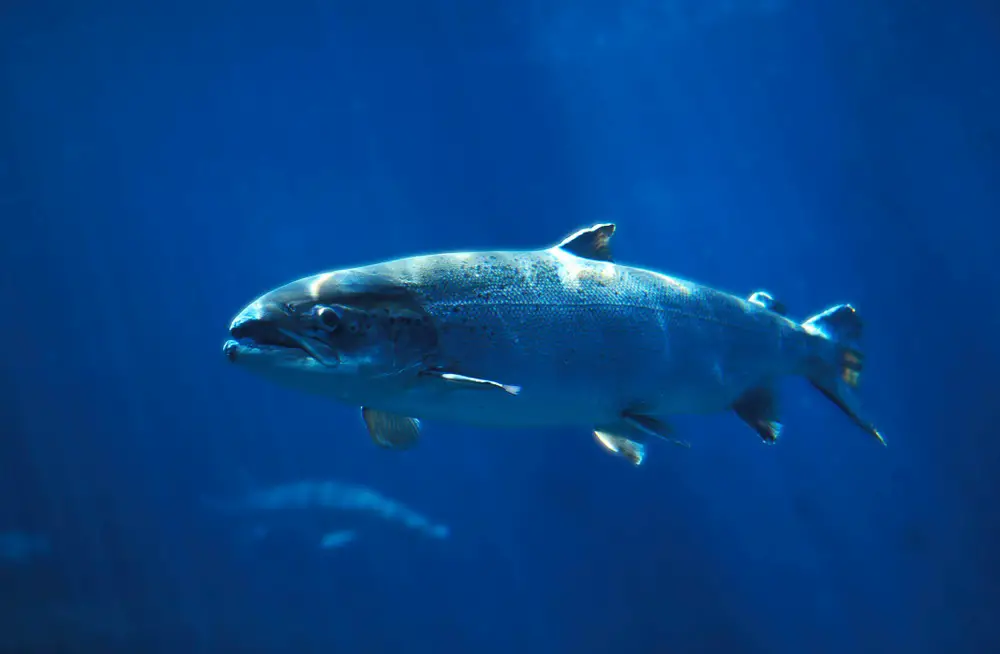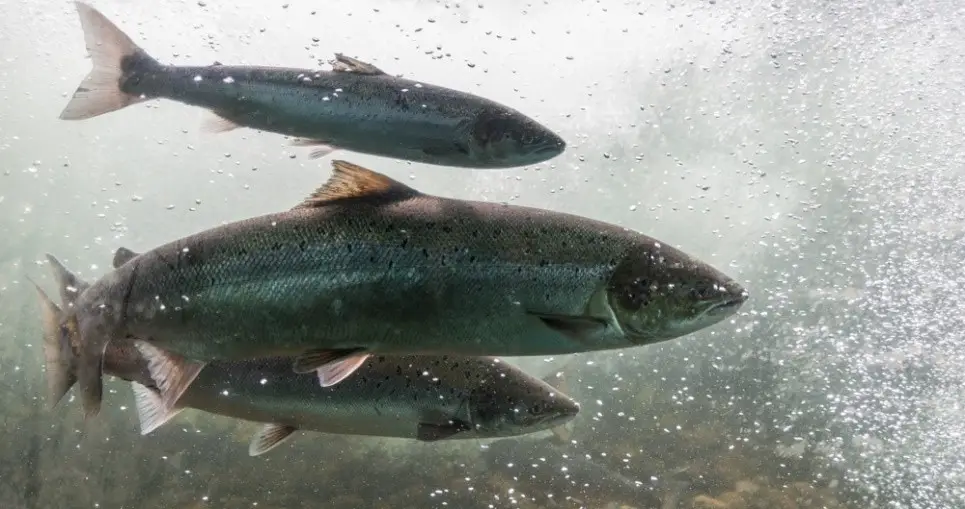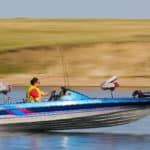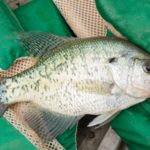Trolling the open ocean water for fish may seem intimidating when you don’t know where to begin. When trolling for salmon, the method is the same whether you’re trolling for Atlantic salmon or Pacific salmon. There are also landlocked salmon that we’ll help you learn how to troll if you plan to troll in the northeastern United States.
If you’re new to trolling and are unsure of what size trolling motor you need for your boat, we have an article that focuses on choosing the right size trolling motor for your boat. It should answer any questions about what size trolling motor you should choose for the size boat you have.
But let’s get back to salmon.
Pacific and Atlantic Salmon: Everything You Need to Know
Salmon are anadromous fish which is a fancy word that describes their ability to live in both freshwater and saltwater.
Salmon are born in freshwater streams and rivers where they live anywhere from a few months to a few years before venturing out to the ocean’s open waters. There, salmon grow until they are sexually mature. When they reach sexual maturity, salmon return to the freshwater streams or rivers where they swim upstream to spawn.
Both Atlantic salmon and Pacific salmon follow these same spawning patterns and life cycles. The salmon use so much energy swimming upstream and spawning that they quickly deteriorate and die.
Atlantic salmon is the third-largest species of salmon. They are found in the northeastern rivers of the United States and migrate to the Atlantic ocean when they mature.
Pacific salmon have five different species: chinook, coho, pink, sockeye, and chum. Chinook salmon are also known as king salmon because they are the biggest species of salmon.
You can troll for both Atlantic salmon and Pacific salmon the same way. You can troll for them around the mouth of rivers where they are swimming upstream to spawn, or you can troll for them in the open ocean waters.
What Are Landlocked Salmon?
Landlocked salmon follow the same general life cycle that sea-run salmon follow. They both are born in freshwater rivers or streams and then migrate to a larger body of water when they have aged. The only difference is that landlocked salmon have no access to the ocean.
They may reach a large body of water like a lake or reservoir, but they have no access to the ocean. This is what classifies them as landlocked salmon and it is good information for salmon anglers to have.
Your Step by Step Guide on How to Troll for Salmon

There are two prime times every year that you’ll want to focus on salmon trolling: spring and fall. This is when salmon are the most active. Salmon feed the most during the spring, and they spawn during the fall.
Both Atlantic and Pacific salmon feed on small crustaceans, squid, and small baitfish when they are in the ocean. They will occasionally venture back to the river estuaries to look for food in those areas.
If you’re trolling for salmon in the spring, you can troll the ocean or estuaries for salmon. In the fall, when salmon are spawning, you should focus more on estuaries, rivers, or streams where the salmon are likely swimming upstream to reproduce.
Step One: Check the Water Temperature
Salmon love cold water, so you’ll need to check the water temperature of the water you’ll be trolling to see if that’s where the salmon will be.
| Species | Temperature (°F) |
| Atlantic Salmon | 40°F to 68°F |
| Chinook Salmon | 55° to 64°F |
| Coho Salmon | 38°F to 55°F |
| Pink Salmon | 40°F to 50°F |
| Sockeye Salmon | 45°F to 65° |
| Chum Salmon | 53°F to 57°F |
Salmon will dive deep to find the water temperature they prefer. They generally stay near the surface, swimming only a few feet deep, but they will dive deeper to find colder water if the water is exceptionally warm.
Step Two: Measure the Water Depth
This step goes hand-in-hand with reading the water temperature. The water temperature will let you know how deep you will likely need to run your gear when you troll.
Generally, you’ll only need to let out your lines between 20 to 40 feet. However, any salmon deeper than 40 feet may notice your bait spinning above them and curiously swim up to try to catch a bite.
Using a fish finder to measure water depth is a great way to chart locations that you may want to return to in the future as a salmon troller, especially if you plan to fish in the same areas for many years. This is a great way to chart trends over time to see if the salmon are following the same patterns each year or transitioning into something new.
Step Three: Rig Your Fishing Line
Salmon are relatively large fish and can put up a decent fight, especially if you’re pursuing chinook. You’ll need to make sure your rods are equipped with a strong fishing line to handle the weight and fight of salmon.
We recommend using at least a 30-pound monofilament or 60-pound braided fishing line for trolling salmon. It’s not too heavy that you won’t notice the rod bending when you have a bite, and it’s not too weak that it will snap during a fight.
Arguably the best bait to use for salmon when trolling is anchovy. Salmon feed on a variety of small fish throughout their life cycle but anchovy is the most common in the coastal and bay areas. Of course, you can also use herring, squid, shrimp, spinner, or other lures to attract salmon too.
Step Four: Let Out Your Lines and Start Trolling
Once you have your lines rigged, it’s time to start trolling. We have found that salmon trolling around 2.5 mph is a good trolling speed over water, but you can adjust according to your conditions. You’ll likely be battling currents when you’re trolling.
Make sure you slowly release enough line for the bait to sink to the depth indicated on your fish finder. In most cases, you will want your fishing line to be at a 45-degree angle as you move through the water.
Sometimes you may need to add weight to reach the proper depth. Place your rods in the rod holder and set sail.
And Finally… Watch Your Rods
Keep an eye on your salmon trolling rod to see if it is bending. If you’re getting a bite or a salmon has hooked itself, the rod will bend, and you’ll find yourself in the middle of a fight with a salmon. Be sure not to pick up your rod too soon. Also, keep the drag loose enough so the line or pole doesn’t break if the salmon is putting up a strong fight.
Carefully reel the salmon to the boat and use a net to land him. Salmon are schooling fish, so where there’s one, there’s likely more!



